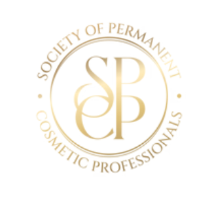MEDIA VERSION FOR SHARING -
Mother nature's medicine cabinet has shared her treasures since the dawn of time.
Over the eons, people discovered that plants or parts of them could be beneficial. Leaves or flowers might have fallen in a pot of hot water. It smelled good so they tasted it. It tasted good so they drank it. It was a slow careful testing process that mothers taught daughters. Herbal lore.
Every generation added to the lore. They knew what each plant was best for. Some had many uses. Others were more specialized.
Fast-forward to today and the process has become a science. We want to know what something does, proof, and how it works.
Every plant has a built-in system to help it thrive. Some are prickly so animals won’t eat them. Others, like holly berries, are toxic so they survive. When we use plants, we take advantage of the plant’s protective immune system to help ourselves.
Scientists knew we had receptors attached to the cell membranes of every cell in our body. It’s an auto-pilot set of systems that keeps us alive. Our circulatory system pumps. Sensory receptors warn us of dangers. The immune system keeps us healthy.
In hemp, plant scientists found over 100 compounds called Cannabinoids. The term cannabinoid gets its name from the cannabis plant scientists were researching.
Then scientists discovered a new receptor system in the body. They named it the Endocannabinoid system, (endo means internal or within) or ECS for short. The ECS is found in the brain, organs, tissues, glands, and the immune system of most mammals.
Scientists believe ECS receptors to be more numerous than those in any other system. These receptors recognize and put cannabinoids to use. They help our body rebalance and self-heal.
The ECS was discovered in 1992. Research is young and ongoing globally at an amazing rate. The wealth of information out there is impressive. Hopes are high, as are the indications from many studies, for many new medical and non-medical uses.
Researchers called cannabinoids from plants that stimulate our receptors, phytocannabinoids.
The most famous of these is THC. THC is best known for its “high” or intoxicating psychoactive properties. Many cannabinoids can trigger mood changes which indicate they are also psychoactive. However, they do not have any intoxication effect. You might feel calmer, but no judgment or mental alertness is impacted.
Our other cannabinoids include cannabidiol (CBD), cannabinol (CBN), and most recently, and getting a lot of attention, cannabigerol (CBG).
As scientists explored the possibilities of cannabinoids they tried applying traditional western scientific methods. Instead of using the whole plant, they just used what should do the job. They made synthetic versions using a single cannabinoid.
However, in testing, they found plant cannabinoids worked better. They found the single synthetic cannabinoid didn’t have the same results or effectiveness as the blends found in herbal cannabis.
The negative reputation of THC is from its impact on mental alertness. Activities like work or driving may be affected. It can also leave the user with brain fog the next morning.
Hemp has lower levels of THC than the marijuana plant. Growers bred strains to reduce the level of THC even more. Legally hemp must be 0.3% THC or less, so there is no mental high.
Many consumers continue to turn to hemp CBD based products for the positive outcome of cannabidiol without any high. Yet there can still be a risk of THC buildup in the body.
This triggered more research. CBG caught some growers' interest. All hemp has CBG in it, but the levels are typically very low.
CBG is abundant in young hemp plants. It is similar to a stem cell, a mother cell that triggers the plant’s growth. In plants, it’s called a progenitor molecule. All three lines of cannabinoids emerge from it, CBD, THC & CBC. Studies showed that as a precursor, it doesn’t contain THC.
Breeders doing research discovered a young plant that tested high in CBG, often had much lower levels when it became mature. CBG levels reduce because portions of it convert into CBD, THC, and other components.
One of those researching breeders took a scientific approach. From his farm in Switzerland, he studied thousands of different varieties and cannabinoids. Based on early trials he focused on creating a high CBG strain. The result? A strain that is garnering attention across Europe.
In the rugged Swiss Alps, at high elevation, the goal of high CBG, terpenes, and minimal THC became a reality. His result became a registered strain of hemp high in CBG called Matterhorn.
One thing many consumers aren’t aware of is every strain of hemp is different. The plants may look alike, their chemical makeup is very different. Like mint, rosemary, or lavender, each herb’s best use varies with variety.
CBD strains proved themselves effective for many uses. CBG, terpene-rich strains, appear to offer even more. The right strains properly grown, eliminate THC.
The most effective CBG is rich in essential nutrients including omega 3, protein, and fiber. Grown in the right conditions at high elevations, the result is vigorous and potent with the highest levels of CBG available. There is no detectable THC.
While there is much less research on CBG available, it is the precursor or mother of CBD. We know that all the benefits found in CBD had to come from this original form.
We have already seen CBG excel as a stress and anxiety management tool. A bonus in addition to the other common CBD benefits.
Research is rampant and hinting at much more on the horizon. Some findings point to its potential for a variety of medicinal uses and disease-fighting possibilities. Among these include its possible use as a “superbug-fighter.” They don’t have all the answers yet, however a window has opened for more studies.
Consumers should be choosy about the quality of the hemp products they buy. Even among the same strain, there can be variations.
Hemp is a hyper-accumulator. It tries to detoxify what it comes in contact with. This includes the soil it is grown in. If there are contaminants in the soil or water used...hemp will absorb them.
Each strain has its ideal conditions. High elevations, certified pure soil, and water assure the most abundant levels of CBG and terpenes.
The ground, the water, and plants must be tested at each stage of development. The testing and certification process is critical. It assures you the highest quality products.
The higher the quality of the hemp, the more benefits and potential solutions it offers.
BRIEF BIO HERE.
 Judith Culp Pearson receives three top honors
Judith Culp Pearson receives three top honors
at the annual Society of Permanent Cosmetic Professionals in
Ft. Worth, Texas - October 7-9, 2023




